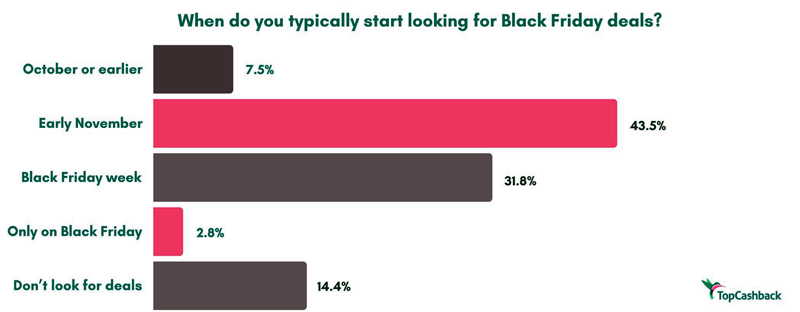financial wellness
More Americans Joining Workforce, But Many Are Unable to Find Living-Wage Jobs
Last Updated on September 19, 2025 by Daily News Staff
WASHINGTON, Sept. 15, 2022 /PRNewswire/ — The American workforce expanded from July to August, but many of those workers found they were unable to secure Living-Wage Jobs, according to an analysis by the Ludwig Institute for Shared Economic Prosperity (LISEP).
In its monthly True Rate of Unemployment (TRU) for August, LISEP reported that 22.5% of American workers are now classified as “functionally unemployed,” defined as the jobless, plus those seeking but unable to secure full-time employment, even if they want to work full-time and/or cannot earn above the poverty line after adjusting for inflation. This is an increase of 0.2 percentage points over the July TRU.
TRU’s sister metric, TRU Out of the Population (TRU OOP) – a measure of those who are functionally unemployed out of the entire population, not just active workforce participants – remained unchanged, which, when coupled with a rising TRU, indicates more workers are joining or returning to the labor force.
“It is a net positive that previously discouraged workers are rejoining the workforce, but unfortunately, their return to the workforce is, in many cases, not a return to full-time, living-wage employment,” said LISEP founder and chair Gene Ludwig. “The challenge for policymakers is to continue to encourage positive growth in employment opportunities, but do so in a manner that provides for growth in living-wage jobs for every American who wants one.”
Demographically, Black workers saw the biggest jump in TRU, increasing by 0.6 percentage points, from 25.8% to 26.4%. This, with the Black TRU OOP climbing by 0.7 percentage points, indicates that a larger percentage of Black workers are classified as functionally unemployed. Hispanic workers saw no change in the TRU, holding steady at 26.3%, with White workers tracking the overall TRU and increasing by 0.2 percentage points, to 20.7%. Male TRU increased a full percentage point, from 17.5% to 18.5%, while women dropped a half percentage point, from 27.5% to 27.0%.
Living-wage job opportunities continue to be an issue for workers with only a high school diploma, with the TRU for this group jumping 2.5 percentage points, from 24.5% to 27.0%. Likewise, those without a high school degree saw their TRU increase, from 47.3% to 47.6%. TRU for workers with some college (but no college degree) dropped, from 25.6% to 23.7%, but an analysis of the TRU OOP for this group indicates the decline is likely due to discouraged workers in this cohort leaving the workforce.
“We know the cost of living continues to be an issue for low- and middle-income Americans, as inflation continues to erode the ability of these workers to maintain even a basic standard of living. So in that respect, I’m somewhat relieved there wasn’t a bigger increase in the overall TRU,” Ludwig said. “But at the same time, we are witnessing an alarming decline in the opportunities for some minority workers to earn a living wage, which is undoubtedly a reason for concern. The bottom line: we can do better.”
About TRU
LISEP issued the white paper “Measuring Better: Development of ‘True Rate of Unemployment’ Data as the Basis for Social and Economic Policy” upon announcing the new statistical measure in October 2020. The paper and methodology can be viewed here. LISEP issues TRU one to two weeks following the release of the BLS unemployment report, which occurs on the first Friday of each month. The TRU rate and supporting data are available on the LISEP website at https://www.lisep.org/tru.
About LISEP
The Ludwig Institute for Shared Economic Prosperity (LISEP) was created in 2019 by Ludwig and his wife, Dr. Carol Ludwig. The mission of LISEP is to improve the economic well-being of middle- and lower-income Americans through research and education. LISEP’s original economic research includes new indicators for unemployment, earnings, and cost of living. These metrics aim to provide policymakers and the public with a more transparent view of the economic situation of all Americans, particularly low- and middle-income households, compared with misleading headline statistics.
About Gene Ludwig
In addition to his role as LISEP chair, Gene Ludwig is founder of the Promontory family of companies and Canapi LLC, a financial technology venture fund. He is the founder and CEO of Ludwig Regulatory Group (LRG), which advises financial firms on critical matters. Ludwig is the former vice chairman and senior control officer of Bankers Trust New York Corp. and served as the U.S. Comptroller of the Currency from 1993 to 1998. He is also author of the book The Vanishing American Dream, which investigates the economic challenges facing low- and middle-income Americans. On Twitter: @geneludwig.
SOURCE Ludwig Institute for Shared Economic Prosperity
Discover more from Daily News
Subscribe to get the latest posts sent to your email.
Family
Holiday Must-Haves: Make holiday shopping a cinch
There’s nothing quite like the joy of watching a loved one’s face light up when opening a gift you selected with care, but holiday shopping can be a chore.
Last Updated on November 28, 2025 by Daily News Staff
(Family Features) There’s nothing quite like the joy of watching a loved one’s face light up when opening a gift you selected with care, but holiday shopping can be a chore.
If you’re a shopper at heart, it may be a challenge you enjoy, but if the idea of holiday shopping brings out the Grinch in you, consider these ideas for gifts to delight those you love this holiday season.
Look for more ideas to make this holiday season magical at eLivingtoday.com.
Power Up Your Holidays with Protein
Whether you’re out shopping or traveling for the holiday, savor the season without compromising health goals by treating yourself to a Premier Protein Winter Mint Chocolate High Protein Shake. Featuring cozy chocolate and refreshing mint flavors, this seasonal favorite is back, but for a limited time only. Flavorful and packed with the nutrition you need, each shake includes 30 grams of protein, 160 calories and 1 gram of sugar. Whether you drink this shake on its own or use it as an ingredient, you can ring in the season with a healthy amount of vitamins C and E, important antioxidants to support a healthy immune system as part of a healthy diet and lifestyle. Learn more at PremierProtein.com.
Holiday Sweets for a Good Cause
Few things go together like the holiday season and sweet treats. By gifting family and friends Wendy’s Frosty Key Tags, which are good for a free Jr. Frosty with every purchase, you can give back all year long because proceeds from every tag sold helps the Dave Thomas Foundation for Adoption find loving, adoptive homes for children in foster care. Available for purchase every November and December, tags are good for one full year and can be purchased in-restaurant, at the drive-thru, via a kiosk, through the app or at Wendys.com.
Step Up Gifting with Fashion-Forward Footwear
Every fashionista knows there’s no such thing as too many shoes, and that includes ankle boots and booties that never go out of style. These low-slung styles can be dressed up or down, depending on the look you’re wearing. Among this season’s hottest designs are faux animal prints, such as cheetah or snakeskin, that add some playful color and texture to complete an ensemble. If you’re not sure about the color or style, a classic black or brown bootie with well-padded soles and a moderate heel is a versatile choice with universal appeal.
Brrr-ing Gifts of Warmth and Good Cheer
Give loved ones an easy way to brighten a cold, dreary day with a cute and cozy matching hat and glove set. It’s a thoughtful and practical gift that brings a smile to recipients’ faces each time they don those warm layers to face a blustery day. What’s more, with all the options for personalization, it’s an affordable way to show you care. When choosing the perfect duo, keep your loved ones’ tastes and preferences in mind. You can find hats and gloves to match virtually any interest, whether it’s a favorite color, sports team or pop culture reference.
Holiday Shopping Hot List
Turns out, Santa may be onto something. Making your list and checking it twice can help you save money (and your sanity) during the holiday season.
- Set a budget and stick to it. Remember to include all your seasonal expenses, including Secret Santa and teacher gifts, ingredients for dishes you’ll take to potluck gatherings and admission to special holiday activities.
- Make a list. Having an idea of what you’d like to buy can help you stick to your budget and avoid frustration when you’re in the stores. You’ll be more likely to avoid costly impulse purchases and you’ll be more efficient while shopping. If you can, jot down a couple of backup ideas just in case what you want proves hard to find or exceeds your budget.
- Shop for deals. Before you head out shopping, research specials on the items on your list. You may be able to adjust your timing to take advantage of sales or find steep discounts at stores you don’t normally visit.
- Give yourself plenty of time. If holiday shopping stresses you out, it’s a good idea to start early. That way you can tackle a little at a time and avoid feeling the pressure of a ticking clock. Also try shopping during off-peak hours, such as during the week, when stores are likely to be less crowded.
- Map out your plan of attack. Planning the most direct route to travel from one retailer to the next can help keep you organized and avoid unnecessary backtracking. You can also save time and gas by making purchases online. Be sure to watch for promotions that provide free shipping and be conscious of shipping times to ensure gifts arrive in time for the big day.
Photo courtesy of Getty Images (couple with gifts)
Photos courtesy of Unsplash (boots and hats)
SOURCE:
Premier Protein
Wendy’s
Discover more from Daily News
Subscribe to get the latest posts sent to your email.
Family
Holiday Must-Haves: Make holiday shopping a cinch
There’s nothing quite like the joy of watching a loved one’s face light up when opening a gift you selected with care, but holiday shopping can be a chore.
Last Updated on November 26, 2025 by Daily News Staff
(Family Features) There’s nothing quite like the joy of watching a loved one’s face light up when opening a gift you selected with care, but holiday shopping can be a chore.
If you’re a shopper at heart, it may be a challenge you enjoy, but if the idea of holiday shopping brings out the Grinch in you, consider these ideas for gifts to delight those you love this holiday season.
Look for more ideas to make this holiday season magical at eLivingtoday.com.
Power Up Your Holidays with Protein
Whether you’re out shopping or traveling for the holiday, savor the season without compromising health goals by treating yourself to a Premier Protein Winter Mint Chocolate High Protein Shake. Featuring cozy chocolate and refreshing mint flavors, this seasonal favorite is back, but for a limited time only. Flavorful and packed with the nutrition you need, each shake includes 30 grams of protein, 160 calories and 1 gram of sugar. Whether you drink this shake on its own or use it as an ingredient, you can ring in the season with a healthy amount of vitamins C and E, important antioxidants to support a healthy immune system as part of a healthy diet and lifestyle. Learn more at PremierProtein.com.
Holiday Sweets for a Good Cause
Few things go together like the holiday season and sweet treats. By gifting family and friends Wendy’s Frosty Key Tags, which are good for a free Jr. Frosty with every purchase, you can give back all year long because proceeds from every tag sold helps the Dave Thomas Foundation for Adoption find loving, adoptive homes for children in foster care. Available for purchase every November and December, tags are good for one full year and can be purchased in-restaurant, at the drive-thru, via a kiosk, through the app or at Wendys.com.
Step Up Gifting with Fashion-Forward Footwear
Every fashionista knows there’s no such thing as too many shoes, and that includes ankle boots and booties that never go out of style. These low-slung styles can be dressed up or down, depending on the look you’re wearing. Among this season’s hottest designs are faux animal prints, such as cheetah or snakeskin, that add some playful color and texture to complete an ensemble. If you’re not sure about the color or style, a classic black or brown bootie with well-padded soles and a moderate heel is a versatile choice with universal appeal.
Brrr-ing Gifts of Warmth and Good Cheer
Give loved ones an easy way to brighten a cold, dreary day with a cute and cozy matching hat and glove set. It’s a thoughtful and practical gift that brings a smile to recipients’ faces each time they don those warm layers to face a blustery day. What’s more, with all the options for personalization, it’s an affordable way to show you care. When choosing the perfect duo, keep your loved ones’ tastes and preferences in mind. You can find hats and gloves to match virtually any interest, whether it’s a favorite color, sports team or pop culture reference.
Holiday Shopping Hot List
Turns out, Santa may be onto something. Making your list and checking it twice can help you save money (and your sanity) during the holiday season.
- Set a budget and stick to it. Remember to include all your seasonal expenses, including Secret Santa and teacher gifts, ingredients for dishes you’ll take to potluck gatherings and admission to special holiday activities.
- Make a list. Having an idea of what you’d like to buy can help you stick to your budget and avoid frustration when you’re in the stores. You’ll be more likely to avoid costly impulse purchases and you’ll be more efficient while shopping. If you can, jot down a couple of backup ideas just in case what you want proves hard to find or exceeds your budget.
- Shop for deals. Before you head out shopping, research specials on the items on your list. You may be able to adjust your timing to take advantage of sales or find steep discounts at stores you don’t normally visit.
- Give yourself plenty of time. If holiday shopping stresses you out, it’s a good idea to start early. That way you can tackle a little at a time and avoid feeling the pressure of a ticking clock. Also try shopping during off-peak hours, such as during the week, when stores are likely to be less crowded.
- Map out your plan of attack. Planning the most direct route to travel from one retailer to the next can help keep you organized and avoid unnecessary backtracking. You can also save time and gas by making purchases online. Be sure to watch for promotions that provide free shipping and be conscious of shipping times to ensure gifts arrive in time for the big day.
Photo courtesy of Getty Images (couple with gifts)
Photos courtesy of Unsplash (boots and hats)
SOURCE:
Premier Protein
Wendy’s
Discover more from Daily News
Subscribe to get the latest posts sent to your email.
Consumer Corner
Black Friday Redefined: A month-long ritual of planning, patience and price-checking
Last Updated on November 21, 2025 by Daily News Staff
(Family Features) Once a one-day shopping extravaganza defined by long lines and doorbuster deals, Black Friday has transformed into a season of rolling discounts and fading excitement.
Black Friday Redefined: A month-long ritual of planning, patience and price-checking
According to new research from TopCashback, nearly 7 in 10 Americans no longer consider Black Friday a one-day event, viewing it instead as a month-long shopping season. Only about one-third still see it as a single-day tradition. More than half of respondents said they now shop online instead of in stores, and 43% start scouting deals in early November.
Findings suggest Black Friday’s sense of urgency has shifted, replaced by a steady flow of rolling discounts and digital promotions. What was once a race for the best bargains has become a marathon for savings.
The evolution of Black Friday appears to be changing how people spend, too. While 18% of shoppers said they spend less now than they did five years ago, another 18% said their habits haven’t changed much. Only 3% reported spending more. For many, the shift seems to be less about budget and more about timing.
Asked whether they’d prefer Black Friday return to a single-day event, 44% said they like having more time to shop, while 26% said a one-day version would feel “less overwhelming.” The rest simply don’t mind either way.
“Consumers are rethinking how they approach major sales events,” said Destiny Chatman, consumer analyst at TopCashback. “They still want value, but they’re less willing to be rushed. The new Black Friday is about planning, timing and feeling in control of spending.”
The research also found shoppers are increasingly aware of the marketing tactics behind the hype. Two-thirds said they believe brands create fake urgency around Black Friday, and another 30% said they think it happens “sometimes.” Despite the skepticism, most still admit deep discounts drive their decisions – nearly 87% said upfront savings are their top motivator, compared with just 6% who said they’re most influenced by cash back or rewards.
Still, money-back incentives aren’t without impact. Four in 10 respondents said they’ve made a purchase specifically because cash back was offered, and about half said they’d consider choosing a smaller discount if it came with meaningful rewards. Electronics and tech ranked as the top categories where shoppers expect to earn the most cash back, followed by fashion and beauty.
Even with the season stretching longer, the emotional rollercoaster of Black Friday remains. Most respondents said they feel neutral after shopping while 33% said they feel proud of the deals they scored. Smaller groups reported guilt or regret after their purchases.
Impulse buying persists with more than 62% saying they occasionally buy things they didn’t plan to, and nearly 1 in 5 said it happens most years. Still, only 5% said they always feel pressured by sales, though 39% said they sometimes do.
For 68% of shoppers, seeing a huge percentage off is what makes them feel best about spending. Another 8% said they enjoy feeling like they “beat the system” and 7% said earning cash back brings them satisfaction.
“People want to feel proud about their spending,” Chatman said. “They’re realizing that a good deal isn’t just about price in this economy. It’s about timing, confidence and getting something that feels worthwhile.”
If Black Friday disappeared altogether, 55% of Americans said they’d be indifferent. Only 31% said they’d be disappointed while 13% admitted they’d feel relieved to skip the pressure.
For all its changes, Black Friday still reflects the psychology of modern spending: the balance between excitement and restraint, hype and habit. Experts say shoppers can make the most of the season by planning ahead, comparing prices over time and focusing on rewards that add long-term value rather than chasing every flash sale.
“Black Friday isn’t gone; it’s simply grown up,” Chatman said. “Today’s shopper is more strategic, less impulsive and more aware of what makes a deal truly worth it.”
To find more information, visit TopCashback.com.
Photo courtesy of Shutterstock (woman using laptop)
SOURCE:
TopCashback
Welcome to the Consumer Corner section of STM Daily News, your ultimate destination for savvy shopping and informed decision-making! Dive into a treasure trove of insights and reviews covering everything from the hottest toys that spark joy in your little ones to the latest electronic gadgets that simplify your life. Explore our comprehensive guides on stylish home furnishings, discover smart tips for buying a home or enhancing your living space with creative improvement ideas, and get the lowdown on the best cars through our detailed auto reviews. Whether you’re making a major purchase or simply seeking inspiration, the Consumer Corner is here to empower you every step of the way—unlock the keys to becoming a smarter consumer today!
https://stmdailynews.com/category/consumer-corner
Discover more from Daily News
Subscribe to get the latest posts sent to your email.

